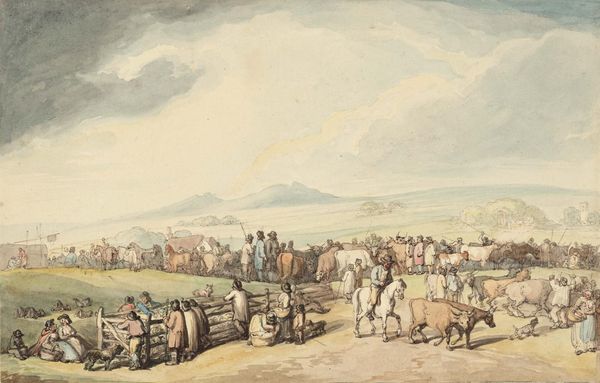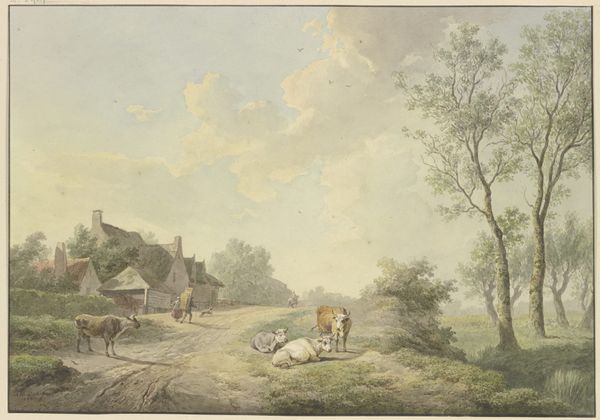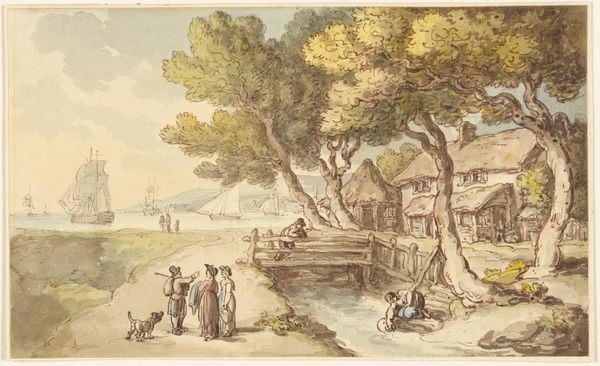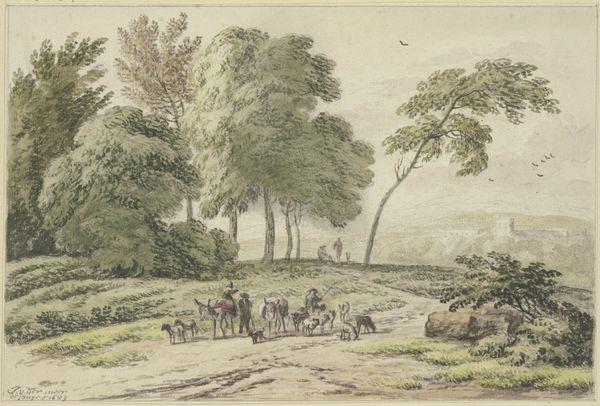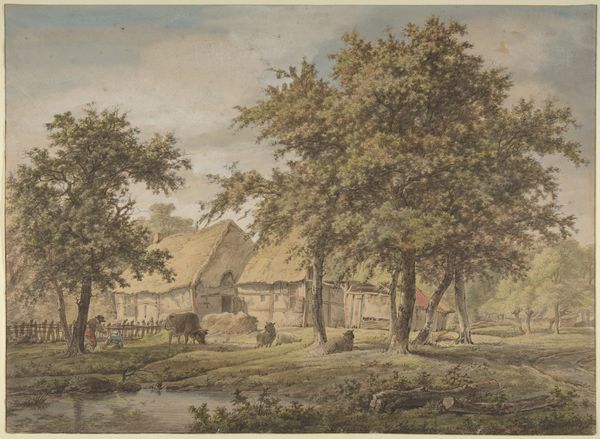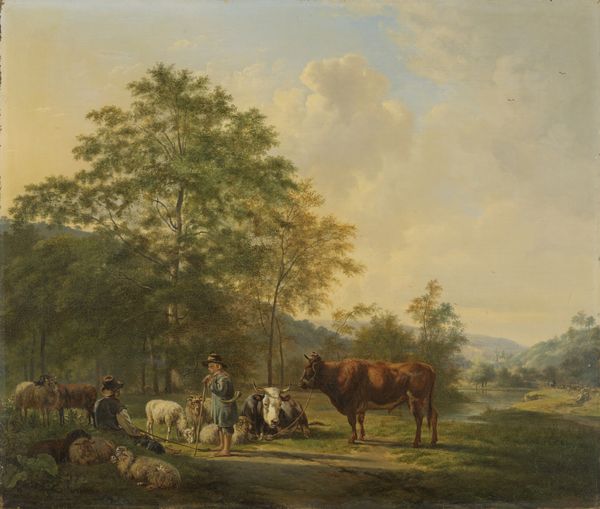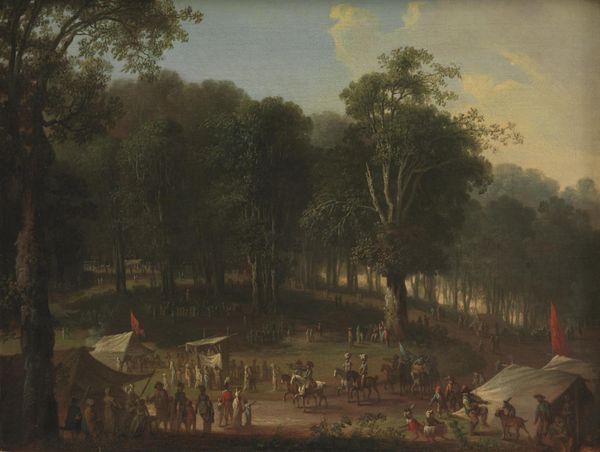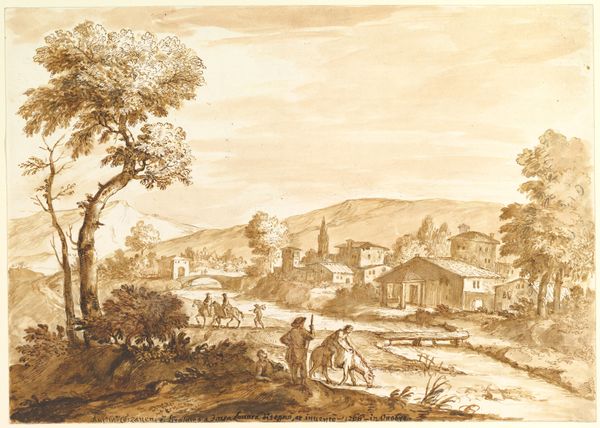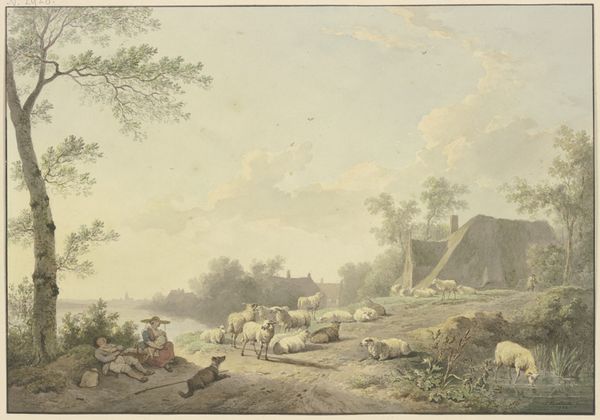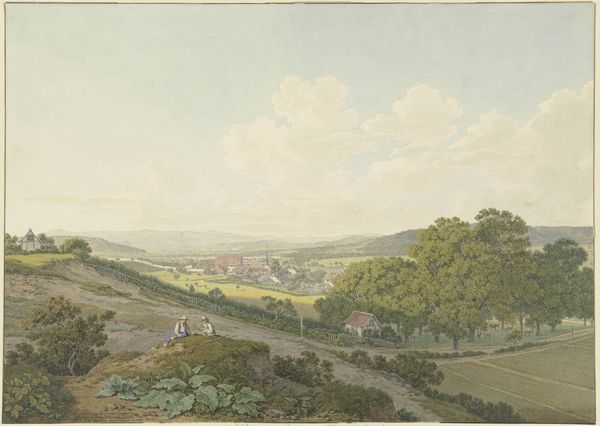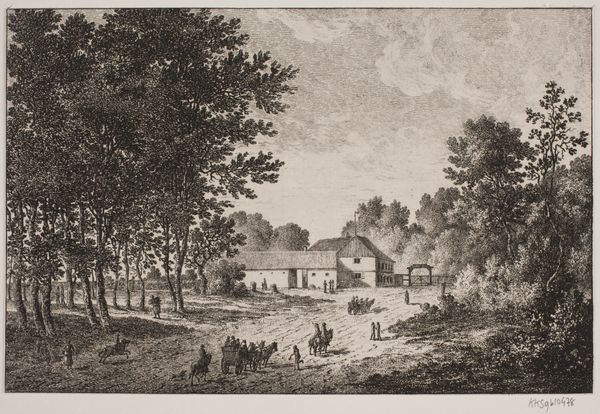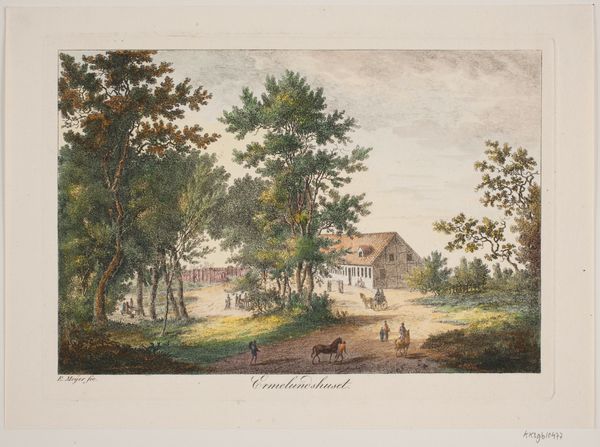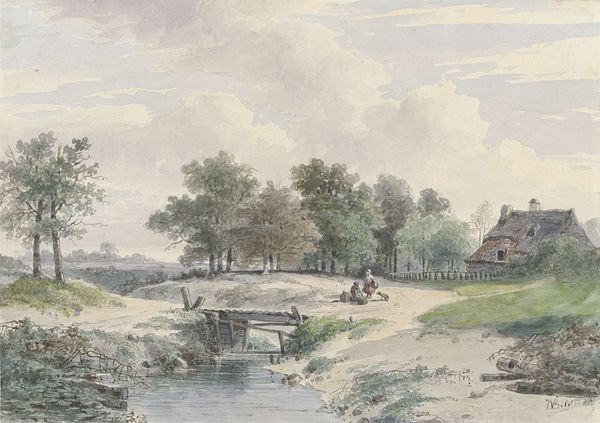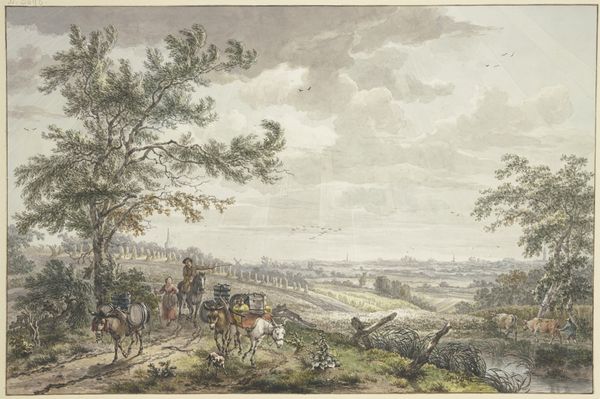
drawing, painting, paper, watercolor
#
drawing
#
painting
#
landscape
#
paper
#
watercolor
#
coloured pencil
#
romanticism
#
watercolour illustration
#
genre-painting
#
mixed medium
#
mixed media
#
watercolor
#
realism
Copyright: Public domain
Editor: Here we have Johann Baptist Clarot's "View of Tabor Linie," a watercolor and mixed-media painting on paper, dating back to 1840. I’m really struck by how the scene captures a specific moment in time, a snapshot of everyday life. What details stand out to you as you examine this piece? Curator: What strikes me is the materiality embedded within this apparently straightforward scene. The pigments used, for instance – consider where they were sourced and how that dictated Clarot's palette. The paper itself speaks of a growing availability of such materials, enabling a wider participation in artistic practice. How does this accessibility potentially democratize representation of the world around us? Editor: That’s an interesting point. The painting feels almost like a document, but one created using specific, and increasingly available, materials. Do you think Clarot was conscious of these aspects as he worked? Curator: Conscious, perhaps, to the extent that he was part of a changing landscape of production and consumption. The figures here are engaged in what appears to be commerce and trade, indicative of a society increasingly structured around exchange. His choice to depict that activity, rather than solely celebrating idealized landscapes or aristocratic portraits, suggests an interest in representing the evolving social fabric and its means of subsistence. Where are we meant to focus? Are we meant to focus on commerce of people going between spaces, or is it just an everyday life sort of tableau? Editor: It’s making me think about who the intended audience would have been. Someone with a vested interest in the workings of the town, perhaps? Curator: Exactly! Not necessarily the landed gentry, but possibly the burgeoning merchant class or those involved in the logistics of trade. This piece, then, serves as more than just a view. It’s a material record of social shifts, economic activities and access to tools available at this period. Editor: So, we’re seeing not just a scene, but a glimpse into the material conditions of 1840 through Clarot’s artistic choices? Curator: Precisely. And how those conditions shape the possibilities for representation itself. Editor: This really reframes how I look at landscape painting. I’ll definitely be paying more attention to the 'how' and 'why' behind the materials used. Curator: Absolutely. The means of production, not just the final product, hold immense meaning.
Comments
No comments
Be the first to comment and join the conversation on the ultimate creative platform.
